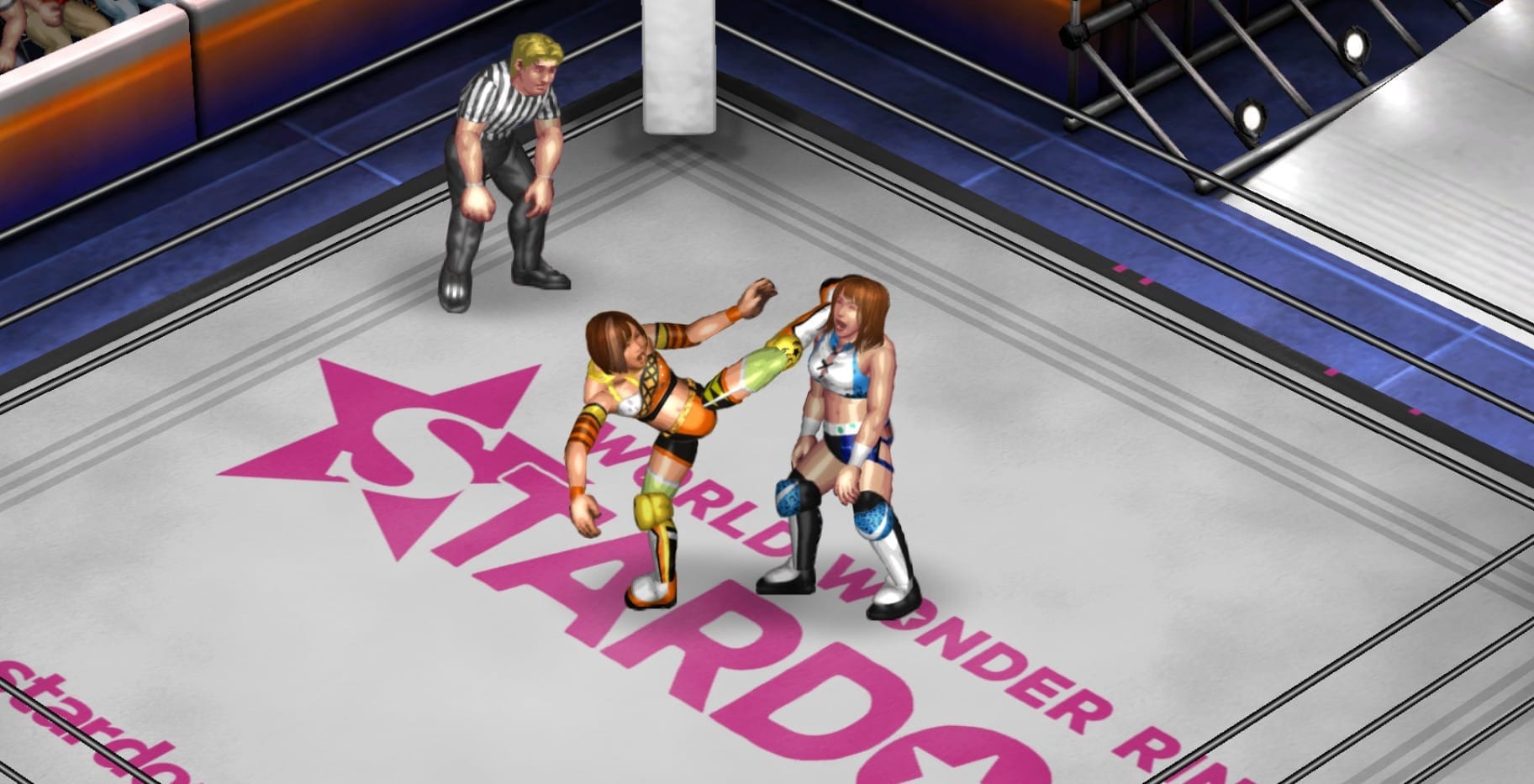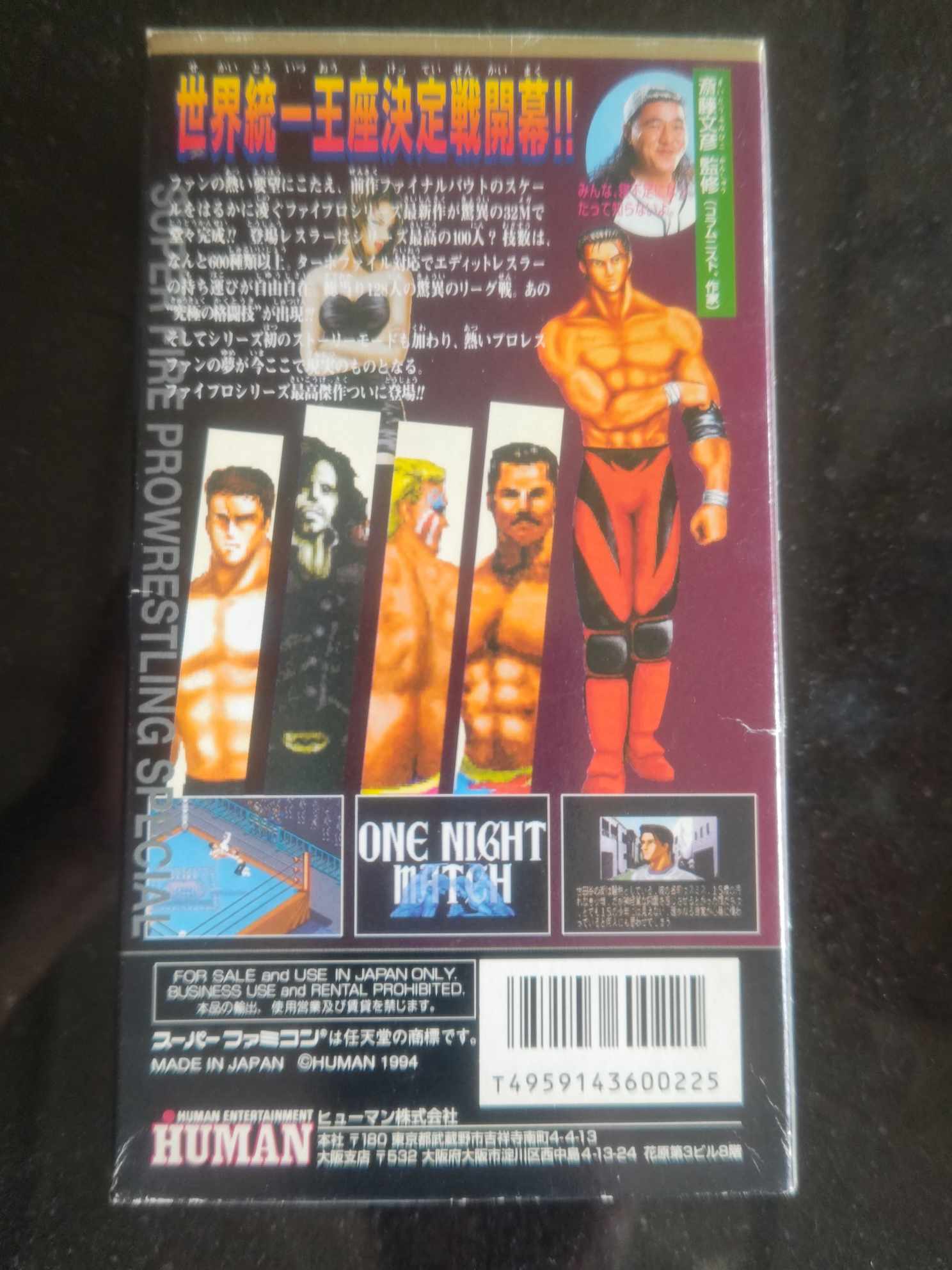Staying Power: Fire Pro Wrestling Celebrates 35 Years in the Ring
35 years and going strong

A niche professional wrestling series based around the concepts of customisation and offering players the ability to make their dream matches, the Fire Pro Wrestling games have unique staying power. Thirty-five years after the series’ first bell, Fire Pro’s team is celebrating its anniversary.
The Fire Pro Wrestling series is the definition of a video game made for the hardcore player. With a well-defined audience, these games allow the player to edit everything from the wrestler to the ring, and everything in between.
A typical Fire Pro Wrestling match has the player make strategic decisions on how they can defeat their opponent. Button mashing, the bane of combat game purists everywhere, results in the moves being locked out. Instead, a player must start small, building the match as it goes. The games are deceptively simple in their visuals; while they have their own graphical flair and charm, the titles use 2D sprites, with matches viewed from an isometric perspective. In reality, Fire Pro is anything but simple and requires careful selection of moves and management of a character. With an included mode that allows players to take over the role of a pro wrestling promoter, the games have a dedicated player base.
Story of a champion
Fire Pro Wrestling first made its way to consoles in 1989, when it was released on the PC Engine. Multiple sequels followed, including some on the Super Famicom (the Japanese equivalent to the Super Nintendo.)
One of the series’ landmark titles was 1994’s Super Fire Pro Wrestling Special. Thirty years on from its initial release, the game still has a big impact on professional wrestling games and a wider legacy felt beyond them.
The title was the fifth in the series and is most famous for its impactful story mode ending, and for launching the career of videogame creator Goichi Suda (better known as Suda 51). The creator of the No More Heroes series, Mr Suda cut his teeth in videogames while working on the Fire Pro series’ creative team. This included writing much of the storyline for the fifth game.

Looking at the game’s box art and witnessing the end credits, players encountered the name of legendary Japanese professional wrestling journalist Fumi Saito. At the time, Mr Saito worked as a writer for Weekly Pro Wrestling. He described his role on Super Fire Pro Wrestling Special as one of supervising the game’s story, to ensure the pieces fit.
“Someone from Human contacted me to see if I would be a supervisor and have my face on the back of the box,” Mr Saito recalled. I guess it was (aimed at) more of a Weekly Pro Wrestling reader, for the reader of the wrestling column.”
According to Mr Saito, it was likely Goichi Suda who recommended him for the game, which was the final version of Super Fire Pro Wrestling.
“I haven’t seen him [since], but it was his brainchild. I believe it was his idea: 'Bring Fumi in to clean up the story mode and ensure it was a story that made sense to everyone' ” Mr Saito said.
Key to Fumi's hiring was that the game, a large undertaking on a 32 MB cartridge, required someone who understood professional wrestling well, to help the internal logic of thousands of potential matchups and scenarios.
Early in this story mode, the player had to choose between different schools of wrestling: Fighting Spirit (New Japan Pro Wrestling), King’s Road (All Japan Pro Wrestling), or shoot style (UWF).
“You create your own wrestler and play along with the story you are playing into, he recalled. After you choose to go to the Antonio Inoki school or the Karl Gotch school, you go into different stages. After the second page, it’s like mathematic probability, you have to come up with different possibilities for if this guy does this, or does that.
"They wanted me to create the story mode, the basic scenario mode. Game producing is so much of a team effort. It’s a probability thing, the how many thousands of patterns. By the time I was involved the basic story was already being created, and these guys were already going in a certain direction. I oversaw and supervised the story. Only my face appeared on the back of the box [but] it’s a team effort.”
Because of copyright restrictions, Super Fire Pro Wrestling never used actual listened pro wrestlers, which has been something of a rarity in the game.
“It’s impossible to get the rights to every pro wrestling superstar,” Mr Saito said.
Instead, the series features close analogues to over one hundred well-known professional wrestlers in Japan and elsewhere. With over 120 in-game wrestlers, Super Fire Pro had plenty of these to choose from.

Creating a champion
The Fire Pro series has also long featured a detailed edit mode, allowing players to make their own wrestlers.
“You can create the headpiece and the body piece and make a list of moves you want to make,” Mr Saito said. “You can create as many edit wrestlers as possible, then have this guy play story mode.”
The Fire Pro series is also known for its wide array of wrestling moves.
“As many existing moves as possible. The German suplex, the dragon suplex, all the moves you could imagine, it’s in there,” Mr Saito said. “It was programmed that some guys could not go to the top rope.”
One of the key features of the Fire Pro Wrestling series is that players find out about hidden game mechanics as play progresses.
“You have to find out as you play,” Mr Saito said. Some wrestlers are more agile than the others, some are taller. Those are the crazy details that they have to build in. We created in studio, this is how you beat this guy. It takes sometimes a year for a player to get through (the story mode). They made it hard, you’re not supposed to get that far (quickly).”
Mr Saito was keen to stress it was a team effort.
“I oversaw the whole production, I wouldn’t say from above, but from a third person perspective,” he said. I offered things they didn’t know about. I think it was a success that people are still playing it. It became a landmark for a pro wrestling game. You wrote millions of memos. This guy is supposed to be doing this, but this guy is not supposed to be doing this. You don’t want King Kong Bundy to be doing a moonsault.
The people playing this game are wrestling fans, so you don’t want to disappoint them. I think they play better if you are a better wrestling fan. That was the fun part. This game will constantly challenge you with your knowledge.”
Super Fire Pro Wrestling Special was famous for its story mode and the dramatic controversial ending. At the end of his career, having won the world title but lost everything else along the way, the player character returns home. After he enters his house off ‘camera’ the player hears a gunshot ring out. It’s implied that he has ended it all.
“It was never my idea,” Mr Saito said. “It was already in there. It wasn’t my choice of ending.
“But I do understand that now. Think about it, one wrestler you created, who went into Antonio Inoki’s school of wrestling, or Giant Baba’s. Whatever path you choose, at the end of this story, the conclusion has to come full circle and you have to have the same ending.
“It’s almost exposing the story mode, that the fate is the same. It was a shocking end.”
Goichi Suda said in a 2020 interview that the shock storyline end was his idea. In choosing this shocking path, he was aiming to make Super Fire Pro Wrestling Special stand out.
“When I wrote the first Champion Road, sports games would get yearly sequels that only really updated the roster, and I wanted to do something different,” Mr Suda said. It was a statement from within the game itself. The fact that I was able to include this statement is a testament to the dynamism of Fire Pro.”
A team of champions
For Mr Saito, the role involved coming into Human’s studio, “A couple times a week for a three or four-month period.”
“By the time I went in there, there was a lot already,” he said.
“That was the first time they tried to do a 32 MB cartridge. It took up a lot of information about can and can’t do. Everyone’s different, against every other single wrestler. I learned about that.”
“Those technical parts were largely done by the Human team. They’re good.”
According to Mr Saito, the game included a hidden ranking system, that made it more difficult for players to defeat certain wrestlers.
“It became as realistic as possible for the time,” he said.
Mr Saito recalled being impressed when seeing the game designers at work. At the time, the series was handled by a team from Human. Later, the series made its way to Spike Chunsoft.
“Think about a 1994 environment,” he said.
“In 2024 every single guy, every single desk has a computer in front of you. It wasn’t like that. Every single guy was a computer whiz. These guys were able to handle this big screen TV-looking computer in front of them, all networked. I thought, these guys are really advanced.
“This Super Fire Pro Wrestling Special with a 32 MB cartridge, it was top of the line at the time.”
For Fumi Saito, Super Fire Pro Wrestling Special was the one and only time he was involved in the production of a videogame.
“I had a good time, It was like meeting all sorts of people,” he said. “We were from two different worlds. Print media was still strong. Nineteen ninety-four was still a peak period for Weekly Pro.”
Future champion?
In 2017, Spike Chunsoft released a new Fire Pro Wrestling game that was the first in over a decade. Fire Pro Wrestling World included options that allowed players to upload their created wrestlers online, along with their created textures, costumes, and ring designs. In 2018, they announced DLC which brought officially licensed wrestlers from New Japan Pro Wrestling to the game.
Source: YouTube.
In 2019, Spike Chunsoft released the game’s final DLC, which included a new story mode written by Goichi Suda. Fire Pro Wrestling World’s story mode storyline was a direct sequel to the one found in Super Fire Pro Wrestling.
So far, Spike Chunsoft has celebrated Fire Pro Wrestling’s 35th anniversary on social media and with commemorative merchandise, including a t-shirt. Fire Pro Wrestling General Director Tomoyuki Matsumoto indicated more is to come.
“I can’t say anything right now, but personally, I always want to offer something surprising,” he said.
There has not been any new announcement about any new Fire Pro games, although Mr Matsumoto said he is very motivated.
“I would be happy if you could support me so that I can make that a reality,” he said.
Goichi Suda has also indicated he is keen to see the series continue.
“I’d love to write a continuation or go the other direction and tell the story of a new pro wrestler,” he said. “If Spike Chunsoft is cool with it, I’d return to Fire Pro again.”
Fire Pro Wrestling World is available on the PS4/5 and Steam.